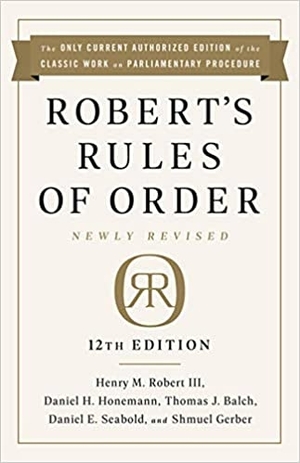Friendly amendment in Robert’s Rules of Order

(1) An amendment is a proposal to change a motion – a proposed action – being considered by a group.
(2) Sometimes people suggest amendments with the intention of making the original motion ineffective, or defeating its purpose. These are hostile amendments, offered with negative intent.
(3) Sometimes people suggest amendments that they sincerely believe will improve the original motion. These are friendly amendments, offered with positive intent.
(4) An unfortunate custom has arisen whereby when a person suggests a “friendly amendment,” the presider often turns to the maker of the motion to ask him if he would accept the amendment. If he agrees, the presider sometimes also asks the seconder if she would accept the amendment.
(5) This is wrong!
(6) Once a motion has been made, seconded, and stated by the chair, it belongs to the group as a whole, not to the individual who first proposed it. It is the group as a whole that must accept or reject any proposed amendment, whatever the intent of the proposer. The maker of the motion, and the seconder, have the same rights as the other members of the group – no more and no less.
(7) When someone offers a friendly amendment, we suggest that the presider say, “A friendly amendment is handled just like any other amendment. Is there a second?” This language doesn’t make people feel stupid, but sets the group in the right procedural path.
(8) If the presider turns to the original maker of the motion to ask if he approves of the proposed change, any member can say “point of order.” This stops the action. The member can then explain the error.
Read about friendly amendment in Robert’s Rules of Order
Robert’s Rules of Order Newly Revised, 12th edition, the most widely accepted authority on parliamentary procedure, offers a clear discussion of this issue in Section 12:91, “Friendly Amendments.”


During 30 years on a university law faculty, the uniform practice was that a friendly amendment was a suggestion to the maker of a motion to incorporate a proposed change without requiring a motion to amend. If the motion had been seconded the suggestion also required the consent of the person who seconded it. Together, they retained the right over their motion. Makes sense and often saves time. Why not allow them to improve their motion? Your asserted rule is overly officious.
Thank you for providing an example where the custom worked well. Our experience has been that this practice leads to confusion about who actually “owns” the motion. Robert’s Rules of Order, in this as in many things, puts primacy on the group as a whole. I appreciate your comments and send you greetings – I have fond memories of my studies during junior year at UC Davis.
Ann